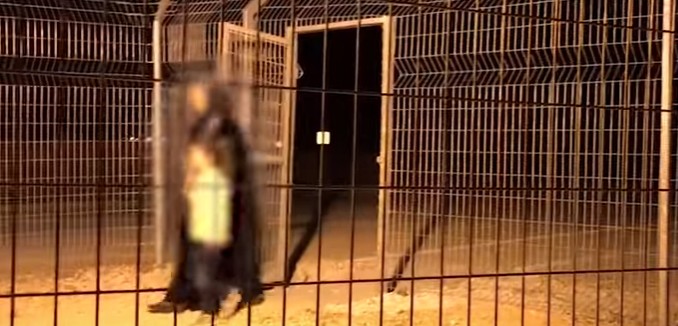Last week, former United States State Department official and Middle East peace negotiator Aaron David Miller tweeted, “Given what’s happening in Syria, I often wonder (and worry) what would have happened had we succeeded in the 1990s in our efforts to broker an Israeli -Syrian agreement on Golan.”
Miller was linking to an October 2015 article he had written speculating how much more complicated the situation on the border between Israel and Syria would be, had Israel withdrawn from the strategic territory it captured in the 1967 Six-Day-War.
But events of this past week on and near Israel’s northern border with Syria highlight how dramatically the dynamic between the two countries has changed in just seven years since the onset of the Syrian revolution.
The current situation is the result of a number of decisions, which, in the end, strengthened Assad and his allies. There was the failure to unite behind the moderate opposition to Assad, the failure to enforce the red lines when Assad used chemical weapons, the chemical weapons deal brokered by Russia, and the nuclear deal with Iran. Whereas five years ago Assad’s hold on power appeared to be slipping away, now he is back in charge of nearly all of the country.
Perhaps the key event in turning the tide of the civil war in Assad’s favor was the visit Islamic Revolutionary Guard Corps-Quds Force commander. General Qassem Soleimani paid a visit to Moscow in July 2015, just after the nuclear deal was agreed to, to enlist Russia’s help in quelling the rebellion against Iran’s client Assad.
In the three years since then, Assad and his backers have taken back major parts of the country backed by Russian airstrikes, aided by Hezbollah and Iranian-backed Shiite militias.
This week, Israeli Prime Minister Benjamin Netanyahu traveled to Moscow, reportedly to ask Russian President Vladimir Putin to ensure that Iranian troops and Iranian-backed militias do not remain in Syria. Israel has repeatedly said that it would not allow Iran or its proxies to establish a military foothold in Syria.
Netanyahu came away from his meeting claiming that Putin had assured him that he would keep Iranian forces far from Israel’s borders. But it isn’t clear if Putin has any intention of dictating an Iranian retreat from the area bordering Israel. And even if Putin made such a commitment, there is evidence that members of Shiite militias are changing uniforms, and disguising themselves as Syrian soldiers.
Still, who would have predicted five years ago that Israel’s leader would engage with Russia in an attempt to deter Iran?
I have no idea if Netanyahu trusts Putin or if he was expecting Putin to respect Israel’s concerns. Of course, Netanyahu’s expectations may have been more practical: making sure that Israel still has freedom to act in Syria against Iran and its proxies without interference from Russia.
This week has also seen the launch of two Syria drones towards or into Israel. On Wednesday, a drone launched from Syria penetrated Israeli air space for 10 kilometers, before it was shot down over the Sea of Galilee. And on Friday, the IDF reported that it shot down a Syrian drone over the demilitarized zone along the border with Israel.
It isn’t clear what Syria was attempting. In February, Iran launched a drone that was later reported to have been armed with explosives, in an apparent attempt to attack Israel directly.
Why did Syria launch two drones approaching Israel this past week? Is Syria testing Israel’s defenses? Is it more confident about its position?
On Wednesday, Reuters reported that some 40 Syrian mothers crossed into Israel with their children to receive treatment for chronic medical conditions. Also this week saw the IDF deliver hundreds of care packages to Syrian escaping from the onslaught of Assad’s attacks on their homes.
In a country where an estimated 11 million people — roughly half of its 2011 population — have been displaced from their homes and at least 400,000 have been killed, the aid Israel extends to a few thousand along its border may be a drop in the bucket, but it provides an area of relative stability on Israel’s border.
Israel’s efforts to help Syrian civilians has earned it a measure of goodwill. “We were afraid in the beginning to come (because we regarded Israelis) as Zionists and enemies,” one of the women who brought a child for medical care told Reuters, “It’s the opposite.”
The goodwill has not been universal as Syrian textbooks still portray Israel as Syria’s main enemy. Some things don’t change.
If the past seven years of Syria’s civil war have a lesson, it’s that the degree to which Israel has escaped the turmoil of the brutal civil war has been due to its holding the high ground on the Golan and actions it has taken — including diplomacy with Russia, airstrikes against Iranian assets, and extending humanitarian aid to Syrian civilians.
Miller’s tweet is a reminder not just that Israel’s position now would likely be worse if it had listened to the wisdom of the diplomats, but also that Israel has had to fend off its enemies on its own.
President Donald Trump is slated to meet with Putin this week. Will Trump back up Israel’s concerns and insist that Iran be expelled from Syria? Or will Israel continue to bear the costs of maintaining stability on its northern border on its own?
[Photo: The Washington Post / YouTube]




